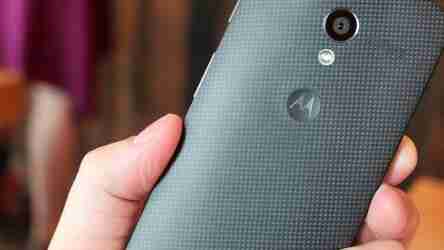Nokia really makes it hard for its fans sometimes.

Don’t get me wrong, I like Nokia handsets and like many others my first mobile phone was a Nokia. Also like many others, I haven’t stayed blindly loyal to the handset maker either, so jumped ship when better options came along. Since then, it ousted its CEO in favor off ex-Microsoft executive Stephen Elop and pledged allegiance to using Microsoft’s Windows Phone platform as its primary smartphone OS.
However, right up until February of this year, the Finnish manufacturer insisted it was keeping its options open for a potential tablet platform strategy . Even at the time, it was always unlikely it would walk anything other than the Windows route for tablets too, after all, it makes sense in terms of offering services and trying to create a unified experience across multiple devices, so if the rumors are correct and Nokia’s making a Windows RT tablet I can understand why it might. I just wish it wasn’t.
Nokia, along with a few other device makers, has kept conspicuously quiet on its tablet strategy, and there’s a good reason for this but don’t tell anyone: very few companies have worked out how to make serious money out of tablets, aside of Apple, Samsung and Asus. For a handset maker whose future looked uncertain, diving into the market with a reactionary tablet simply to have a product out there would have been the wrong move and would have likely hurt the company financially, as well as damaging its reputation further when it inevitably flopped.
What this means is that since the first iPad redefined what the tablet market would look like for the coming years in 2010, Nokia has had nothing to offer its fans. Still, there have been plenty of others to keep us busy, many of which weren’t very good and went on to die their own natural deaths. Remember the HTC Flyer ? It didn’t do very well, by most accounts.
At least, at the end of last year HTC wasn’t committing to launching any more tablets in the near future and had already previously canned plans for an RT-based device , so it seems it too would rather wait until the market matured a bit before dipping its toes into the costly waters again. Also like Nokia, HTC has been battling to whip its balance sheet into better shape. Samsung did the same with its RT tablet at the beginning of the year.
To wait so long for Nokia to finally release a tablet, and then have it be a Windows RT (again, if rumors are correct) is a crushing disappointment. I used a Surface RT for a while when they launched; it was great hardware and virtually useless for my needs. I won’t blather on about all the reasons it was unsuitable, the RT’s shortcomings are well-documented enough already. And from the leaked specs (10.1-inch display, 2/3GB RAM, 32GB on-board storage) and pictures, if this Nokia tablet is legit, it appears to be a Surface RT-alike.
Which is exactly why Nokia making its own is a mistake. What the company needs, and what fans of the brand need, is reassurance that after a pretty major blip, things are back on track and looking bright for the future. Windows RT doesn’t say this, and unless it can buck the trend of other device makers that have rolled out RT devices only to see them flop, it won’t help the bottom line either.
I could see some sense in delivering a full Windows-based tablet, rather than the cut-down RT version, but to opt for a platform that has failed to prove a hit with manufacturers and buyers alike is madness. It was only this time last week that Asus said it was going to stop trying to make Windows RT tablets altogether . If you remember, Asus was one of the few names on the list of tablet makers actually making money from them, and it’s decided not to bother trying with RT anymore.
Hell, even Microsoft’s chief executive Steve Ballmer revealed that the company was having to take a $900 million hit in its most recent financials due to Surface RT “inventory adjustments”. Basically, it made too many of something no one wanted. Slashing the price drastically , which Microsoft did, isn’t going to increase demand, though it might sell a few more units here and there.
So, quite why Nokia would choose to walk this route is beyond me – perhaps using RT makes it eligible for platform support payments in the same way that using Windows Phone does?
Don’t misunderstand, I want Nokia to bring a tablet to market. The hardware maker still makes things that look and feel different to anyone else, and that’s exactly what I want to see in a tablet. But, what I don’t want to see under-the-bonnet is a half-baked, stripped-back OS that won’t even let me install my Web browser of choice.
I want a Nokia tablet, I just hope this isn’t the first one I see.
Featured Image Credit – Thinkstock
Motorola’s Moto X will land in the UK on February 1 for £380, but without Moto Maker
Motorola today announced that it will be launching the Moto X , its flagship Android smartphone, in the UK.

From February 1, the handset will be available for £380 unlocked, or around £25 per month on contract, from Phones 4u, Carphone Warehouse, O2, Amazon and Techdata. All of these retailers will stock the black version, although its white counterpart will be a Phones4u exclusive for the first three months.
Motorola didn’t reference Moto Maker, the site it offers in the US so consumers can personalize their handset, in today’s announcement. A company spokesperson confirmed that the service won’t be available at launch, but added that they were keen to bring it to the UK.
The Moto X will arrive in the UK, as well as France and Germany , with a 1.7 GHz dual-core Qualcomm Snapdragon S4 processor, 2GB of RAM and 16GB of onboard storage. It offers a 4.7-inch AMOLED display, which is necessary for Active Notifications, a 2200mAh battery and 10-megapixel rear-facing camera.
The handset also comes with a few exclusive software tricks, including the Assist app, an always-on listening mode for Google Now, and a shake-to-activate gesture for Motorola’s stripped back camera app.
It follows the release of the Moto G ( our review ), originally unveiled in November last year as a mid-range handset for emerging markets and first-time Android adopters.
LG’s future key devices will have a nifty Knock feature to activate the display with a double tap
When Korean firm LG introduced its LG G2 smartphone with buttons on the back, it also rolled out a nifty feature known as Knock, which lets you simply tap twice on the screen to switch your display on and off, instead of having to press a button.

The company announced today that the Knock feature will be made a standard in all its future key mobile devices, while its L Series smartphones will get the feature via a global upgrade starting in January.
LG Mobile President and CEO Jong-seok Park notes: “No one ever thought that a power button needed to be improved until our engineers wondered why they couldn’t turn the entire screen into a power button.”
Thumbnail image via David Becker/Getty Images , image via LG
